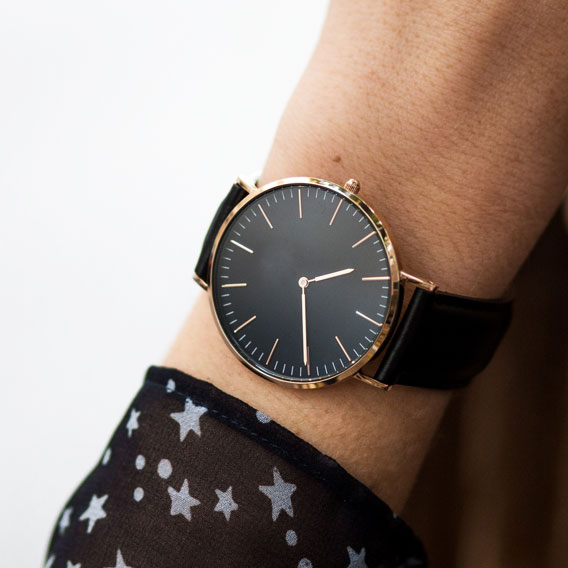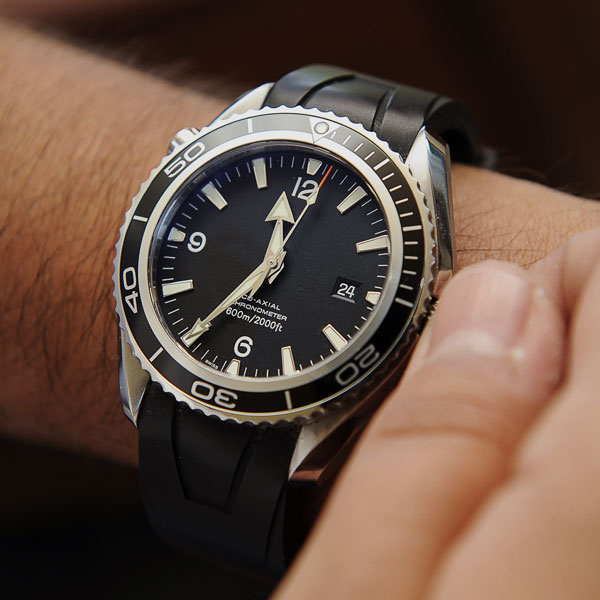“I always wanted one, but when I tried the watch on, it just didn’t work for me.”
It’s a common story.
More often than you’d expect, people try on a timepiece they’ve wanted for ages and it just doesn’t suit. It’s too big, too delicate, too chunky, rubs in the wrong spot, whatever. If they’re lucky, this happens before they part with their money. If unlucky, it’s after they’ve completed the acquisition.
When thinking about buying a watch, everyone considers some combination of brand, model, size, style, function and price point. However, when selecting a watch and enjoying it long term, wrist-feel is often overlooked and, arguably, is more important than any of these factors alone.
Wrist-feel comes from two broad areas; The physical feeling of the having watch on, and how you feel about wearing it.
Many characteristics of both wearer and watch influence the physical sensation; Wrist width and girth, prominence of wrist bones, hairy or smooth etc. The watch’s dimensions, weight, shape, band vs bracelet, crown size, lug length etc.
A less tangible, more variable, set of factors make up how someone feels when wearing a watch. Preferences around design, personal style, materials, colour, price, brand, user environment etc., are different for everyone.
“It sits so nicely on.”
When thinking about “fit” it’s important to remember a watch sits on your wrist, not just across it. A watch’s size only suggests how it will fit. Its overall form can make it seem bigger or smaller than individual dimensions would indicate. The right combination of case, bezel, crown, crystal, lug and case-back design can make nearly any size work for you.

Thinner cases and slender bezels can make a watch look smaller than its dimensions suggest. A raised case-back or curved crystal may lend visual bulk to a watch. Prominent lugs add to the perceived bulk of a watch, sleeker shapes that taper toward the wrist reduce a piece’s perceived size. Crowns are a big one here too. Larger, more prominent crowns can interfere with wrist movement or rub on the skin. Check the crown in all positions the watch will sit.
Weight is an overrated factor. It’s only felt for a short period before it fades into muscle memory. Movement of the watch on the wrist is far more noticeable than weight alone.
The material of a band or bracelet and type of clasp will influence movement, adjustability, flexibility, breathability, and fit. Lug design also plays a part in how the band sits. Each of the common materials used have its advantages depending on how and where the watch is going to be worn. Activity level, environment and lifestyle all need to be taken into account here.
Correct adjustment is critical. Make sure both the band or bracelet and the clasp are adjusted right for you. Some like a looser feel with the watch able to shift around wrist bones and the base of the hand, others a closer fit. If there’s no discomfort when wearing the watch, and it’s the physical feel you’re looking for, great!

“I love the feeling I get when I wear it.”
Some people feel comfortable wearing feature pieces of clothing or jewellery that stand out, some don’t. Some people care what others think of them and their appearance, some couldn’t care less. All are valid ways of thinking, and a watch that compliments these underlying values will deliver better wrist-feel every time. There’s no benefit owning a watch that fits perfectly physically only to keep it hidden away because there is nowhere you feel comfortable wearing it. Wrist-feel certainly extends to mind and heart too.
Getting it right.
Great wrist-feel combines both physical and more intangible feelings. There isn’t one perfect formula, but there are a few things worth considering before you commit. Putting just about any new watch on feels great, getting wrist-feel right will ensure it keeps feeling great for as long as you own it.
